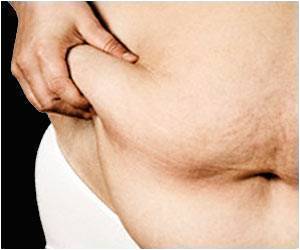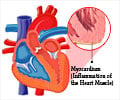Highlights:
- Apple-shaped distribution of body fat, i.e. a higher proportion of fat is stored in the trunk rather than the thighs (pear-shaped) may increase heart disease risk in postmenopausal women even if they are normal weight with normal body mass index (BMI)
- In routine clinical practice, BMI is a common method to estimate a person's risk of heart disease, but is done only in persons who are overweight (BMI 25-34.9). However, women who have a normal BMI should also be evaluated for increased heart disease risk
- All postmenopausal women should undergo physical measurements that reflect body fat distribution to assess heart disease risk so that preventive measures can be put in place
Read More..
Body Fat Distribution & Heart Disease Risk in Postmenopausal Women
- As per the team, this is a first of its kind study to estimate body fat distribution and association with heart disease risk in postmenopausal women with normal BMI (18.5 to less than 25 kg/m2)
- The study included 2,683 women, who were among nearly 162,000 recruited nearly 162,000 postmenopausal women recruited by the Women's Health Initiative in the USA between 1993 and 1998 and followed up until February 2017
- The women did not have heart disease at the time of joining the study but, during an average follow up period of nearly 18 years, 291 heart disease cases were reported
- The study team measured fat mass by DXA scan (Dual-energy X-ray Absorptiometry), which estimates muscle, fat and bone density
- The team found that the top 25% women who stored most fat around their trunk (apple-shaped) had almost double the risk of heart disease and stroke in comparison to the 25% of women who had the least amount of body fat around their middle
- On the contrary, the top 25% of women with the highest proportion of fat stored in their thighs had a 40% lesser risk of heart disease in comparison to women who had the least amount of fat here
- Overall, the highest risk of heart disease was noted in women with the greatest percentage of fat around their middle and the least percentage in their leg fat. They had a more than three-fold increased risk of heart disease compared to women with the least fat around their middle and most of their fat in the legs
Dr Qi said: "Our findings suggest that postmenopausal women, despite having normal weight, could have varying risk of cardiovascular disease because of different fat distributions around either their middle or their legs. In addition to overall body weight control, people may also need to pay attention to their regional body fat, even those who have a healthy body weight and normal BMI”.
- According to their calculations, if among 1000 women who maintained their leg fat constant but reduced the amount of fat around their middle from more than 37% to less than 27%, about six cases of heart disease could be prevented annually, which translates to about 111 cases over the 18 year period of the study
- Similarly, if among 1000 women who maintained their trunk constant but raised their leg fat from below 42% to more than 49%, around 3 heart disease cases could be avoided annually or 60 cases over the 18-year period.
Possible Mechanism By which Increased Leg Fat Reduces Heart Disease Risk
- The reasons why increased leg fat may be cardioprotective remain unclear, but it may be that fat stored in legs does not affect other parts of the body
- Notably, previous studies have shown that increased fat around internal organs can also increase inflammation, poor blood sugar control, high cholesterol, all of which increase heart disease risk
Scope & Limitations of Study
- The study included only postmenopausal women with excess body fat and it is unclear if the associations can be applied to younger women and men with relatively lower body fat overall
- For future research, it may be useful to employ tools that accurately reflect body fat distribution (DXA scan) to identify risk of cardiovascular disease
- However, based on the study findings, it may be too early to advise DXA scans to screen for heart disease risk in the normal weight population
- Measuring waist and hip circumference and their ratio may be more informative than BMI alone
- Postmenopausal women undergo changes in their metabolism and body shape and may actually have more fat around their internal organs than under the skin which are not readily measurable
- Also genetic factors and lifestyle modifications such as diet and exercise may influence the outcome
- The team emphasize that the study has only found an association but not a causal relationship between body fat distribution and heart disease risk
Future Plans
The team plan to study the influence of dietary habits on fat distribution in these women, and evaluate whether food habits might alter multiple health risks including cancer, heart disease and premature death, by affecting body fat distribution.In summary, the findings of the study suggest that pear-shaped distribution of body fat in postmenopausal women is better, but apple-shaped distribution may be associated with higher risk of heart disease even in normal weight postmenopausal women.
References:
- Association between regional body fat and cardiovascular disease risk among postmenopausal women with normal body mass index - (https://doi.org/10.1093/eurheartj/ehz391)
Source-Medindia
















